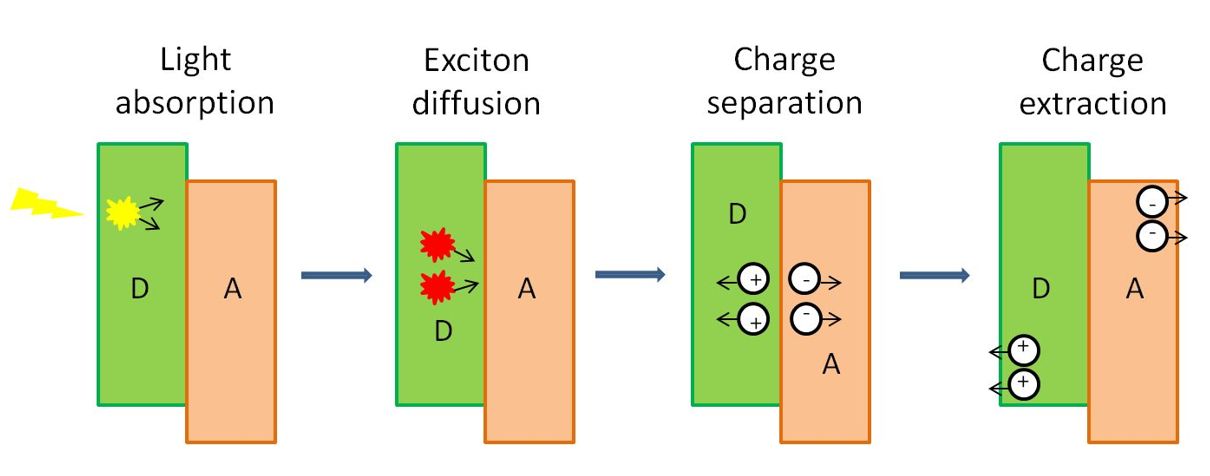Singlet Fission
Thu, 29.04.2021, online

Webinar
Singlet Fission: Search for New Materials
The photophysical process of singlet fission in a solid organic material converts a singlet exciton into two triplet excitons and can be thought of as the inverse of triplet-triplet annihilation. A combination of a thin layer of singlet-fission capable material with a thin layer of ordinary photovoltaic material promises to offer an upper limit of photovoltaic efficiency approaching 1/2 without requiring current matching, well above the usual Shockley-Queisser limit of 1/3.
Nadia Korovina, Wikipedia
The current problem in singlet fission research is finding a material that meets all the usual criteria for photovoltaics, especially long-term stability, and also provides a 200% triplet yield. The search can be divided into identifying a suitable chromophore, assuring its favorable packing in the solid, and transporting all charges generated at one or more suitable interfaces to electrodes. We shall describe the current understanding of the fairly complicated mechanism by which singlet fission takes place and shall address various aspects of the search briefly, with emphasis on the illustration of the role of time-resolved spectroscopy in the visible and mid-infrared regions on a few examples from our own work, which involves collaborating teams in Colorado in the USA and in Prague in the Czech Republic.
Date
Thursday, 29 April 2021
Time
5.00 pm CEST
Registration
Contact IRsweep AG
Dr. Markus Geiser
Contact Swissphotonics
Dr. Christoph S. Harder
President Swissphotonics
+41 79 219 90 51
22 April 2021, Beni Muller + Iris Bollinger

